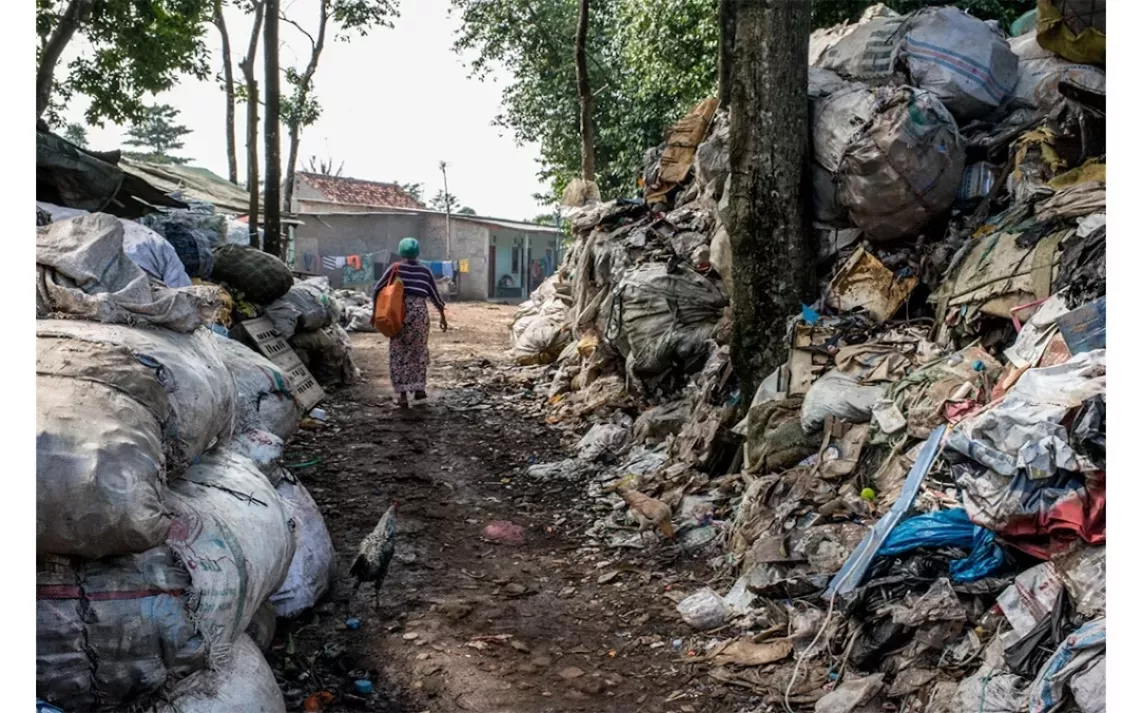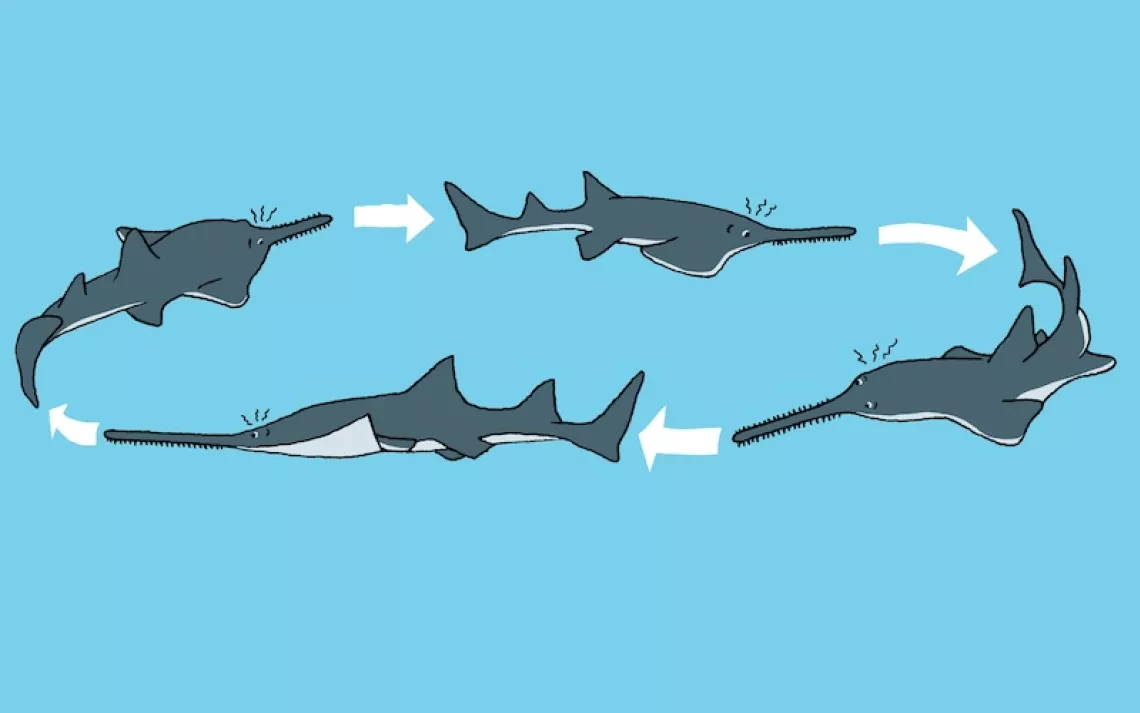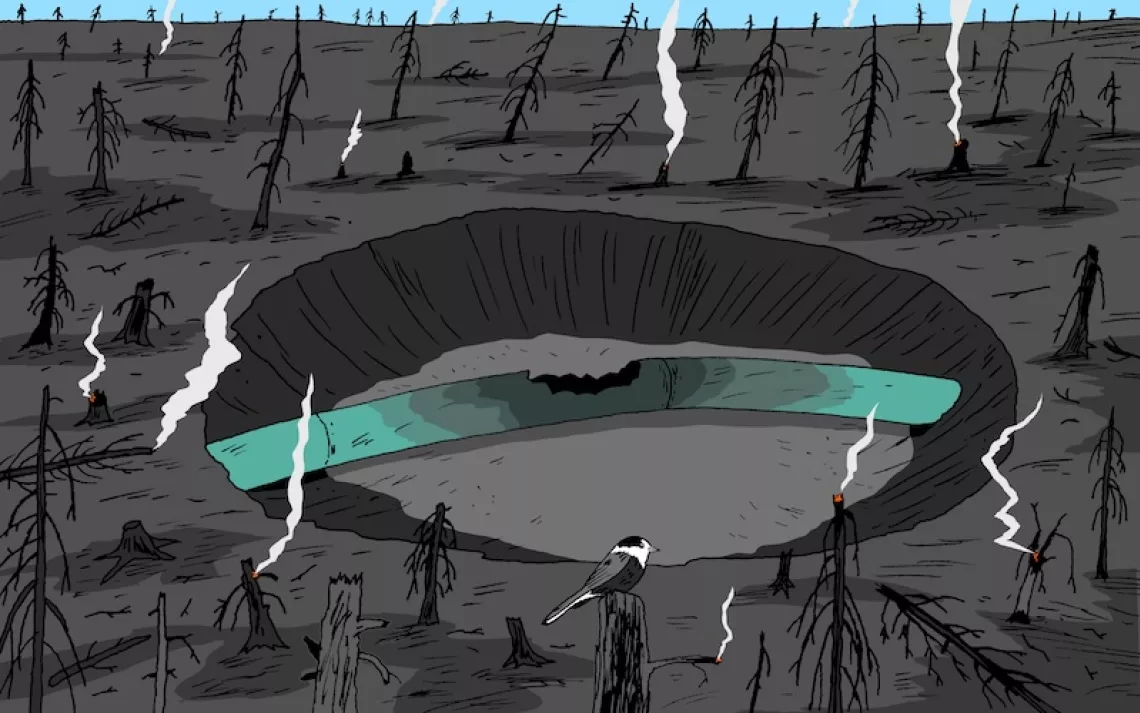Human Dignity Lives On in the “Trashscape”
Elisabetta Zavoli documents life in a landfill

Just beyond the borders of Indonesia’s largest city, Jakarta, home to some 10 million people, mountains of garbage rise into the air as much as 10 stories high. This giant dump site, Bantar Gebang, is the largest uncovered landfill in Southeast Asia. It is also home to 18,000 people who have erected whole villages inside and around the landfill. They make their living as scavengers, sorting through peaks and valleys of discarded garments, plastic bottles, metals, and other waste for anything that can be sold. People in these villages live their lives as others might: sending their children to school, preparing meals and doing laundry, chatting with neighbors.
Photojournalist Elisabetta Zavoli and her colleague Jacopo Pasotti set out to understand how these families came to live in the middle of this new kind of modern landscape: what they are calling the “trashscape.” They discovered that even here, in a place that seems wholly unwelcome to life, people can adapt and thrive—a story they captured most poignantly in the day-to-day life of one midwife, Mak Muji, who dutifully makes the rounds in and around Bantar Gebang, supporting pregnant women and their babies.
“I didn’t want to tell the story of the poor people, stressing their poverty,” Zavoli told Sierra. “I wanted to tell the story of people thriving, of people trying to live with dignity, working for the best of their families inside a place of tremendous impact. For me, these are incredibly strong people.”
Zavoli was based in Jakarta from 2012 to 2018 while doing reporting on environmental justice and science, sometimes in collaboration with Pasotti, an Italian science journalist. While there, Zavoli began investigating how huge metropolitan cities like Jakarta are failing to properly manage their waste. Indonesia is the second-largest plastic polluter in the world after China. Zavoli and Pasotti started tracking the life cycle of the city’s plastic pollution in addition to where much of it ends up: the massive landfill of Bantar Gebang. That’s when they discovered the villages.
“We always wanted to talk about a big environmental topic,” she said, “but with a strong human angle. That was fundamental.”
Zavoli and Pasotti hired a local fixer to help them gain access and meet residents there. During their investigation, they were introduced to Mak Muji.
“We were all women,” Zavoli said. “My fixer was a woman, I was a woman, and Mak Muji lives with her daughter and two granddaughters. So I think in that place, in those first few meetings, we were able to create a connection among us. I am also a mother, so I can very well understand the situation of pregnant women.”
Zavoli and Pasotti followed Muji on her day-to-day rounds, documenting her work with women and newborns.
“This is what amazed me the most,” Zavoli said. “They seemed to be really adapted to that place. They were just living, thinking about normal things like anybody else. All of this was happening amidst garbage.”
Many of the residents living in these trash villages come from rural areas where jobs are scarce. They accept living inside the Bantar Gebang landfill if it means they can earn a living.
The process for documenting Muji’s story and that of the other villagers in Bantar Gebang came with unique challenges. Only workers of the landfill and the residents living inside it are permitted to enter. To get in, Zavoli would travel light, carrying one Nikon D800 camera and a 35mm lens. She wore the same clothes as the other workers while passing in front of security to avoid being detected.
Once inside, she discovered a world unlike any other she had ever encountered.
“The flies,” she says. “You physically walk among a swarm of flies that land on your face, your clothes. You can’t imagine it. I started this story in September and it was still the dry season in Jakarta. No rain for a couple of months, so very dry, very hot. Flies were everywhere. But the worst period is when the rain begins, because that’s the reproductive season for the flies. There were an incredible number of them during the rainy season, with all this garbage fermenting. When you go out from that compound you really smell like the compound.”
Photographing at night on top of the landfill was a particularly daunting task. There is no light there aside from bulldozers and scavengers sorting through trash all night long. To photograph Muji working after sunset, Zavoli would take just a tripod and a camera along with a small LED light, the moon casting a pale shade of gray over the mountains and ridges of waste all around.
Zavoli’s photograph The Landfill Midwife was recently awarded the People category prize and the overall prize of Earth Photo Award 2019 at the Royal Geographical Society in London. It’s just one of many achievements since Zavoli decided to change careers and take up the camera as an environmental journalist. Zavoli was working as a chemist in a laboratory managing wastewater when she decided to express her passion for environmental sciences through storytelling. From an early age, she’d been a visual person; for her, photography was the best medium through which to tell those stories.
Zavoli is a member of the Women Photograph initiative, a platform of women and nonbinary women photographers that belong to minority groups. The initiative was created by Daniella Zalcman, a US photojournalist who wanted to build a community of women in the field who can help each other find work and help raise each other’s voices in an industry dominated by white males.
“If I could, I wouldn’t have taken these pictures,” Zavoli said of Trashscape. “It’s the last thing we would associate with maternity, with being a mother. That being said, these women showed me how life can thrive, even in the most unwelcome of places, and how humanity can show a sense of belonging. The people living there don’t want more money or pity from western countries. They are just asking for dignity, to be recognized as human beings.”
 The Magazine of The Sierra Club
The Magazine of The Sierra Club







